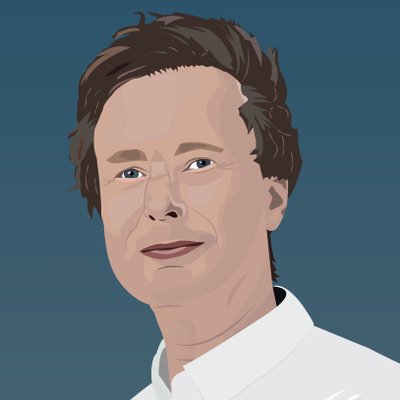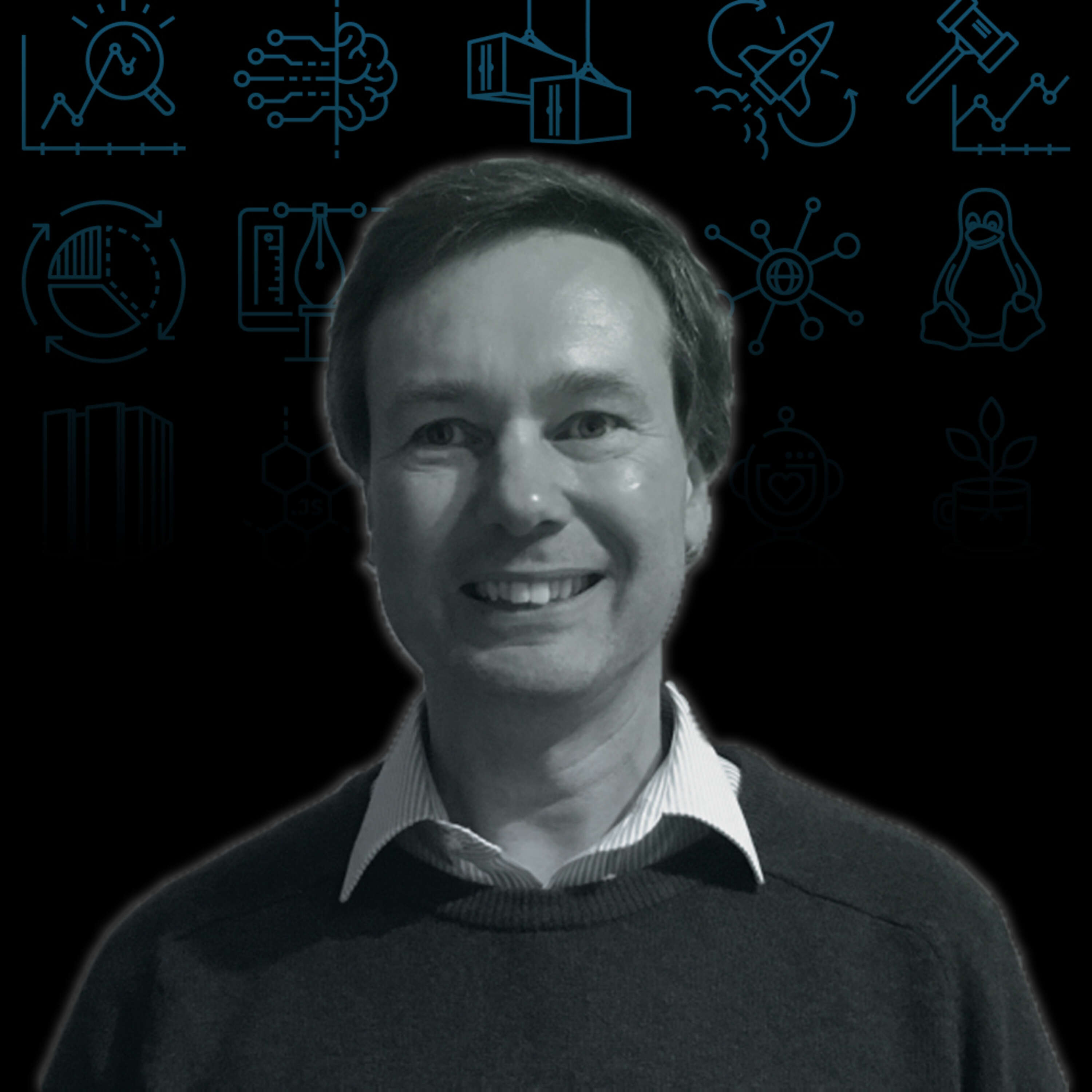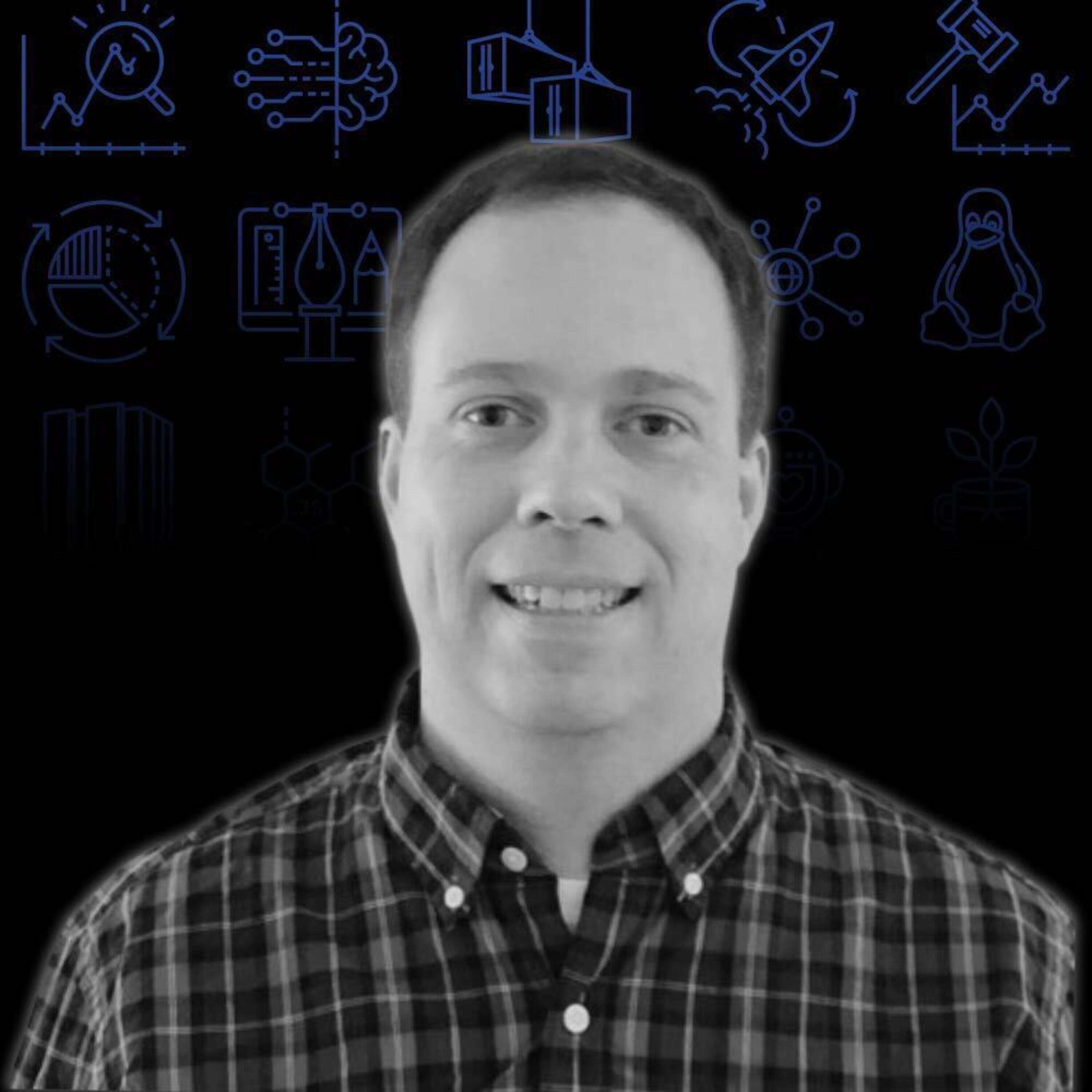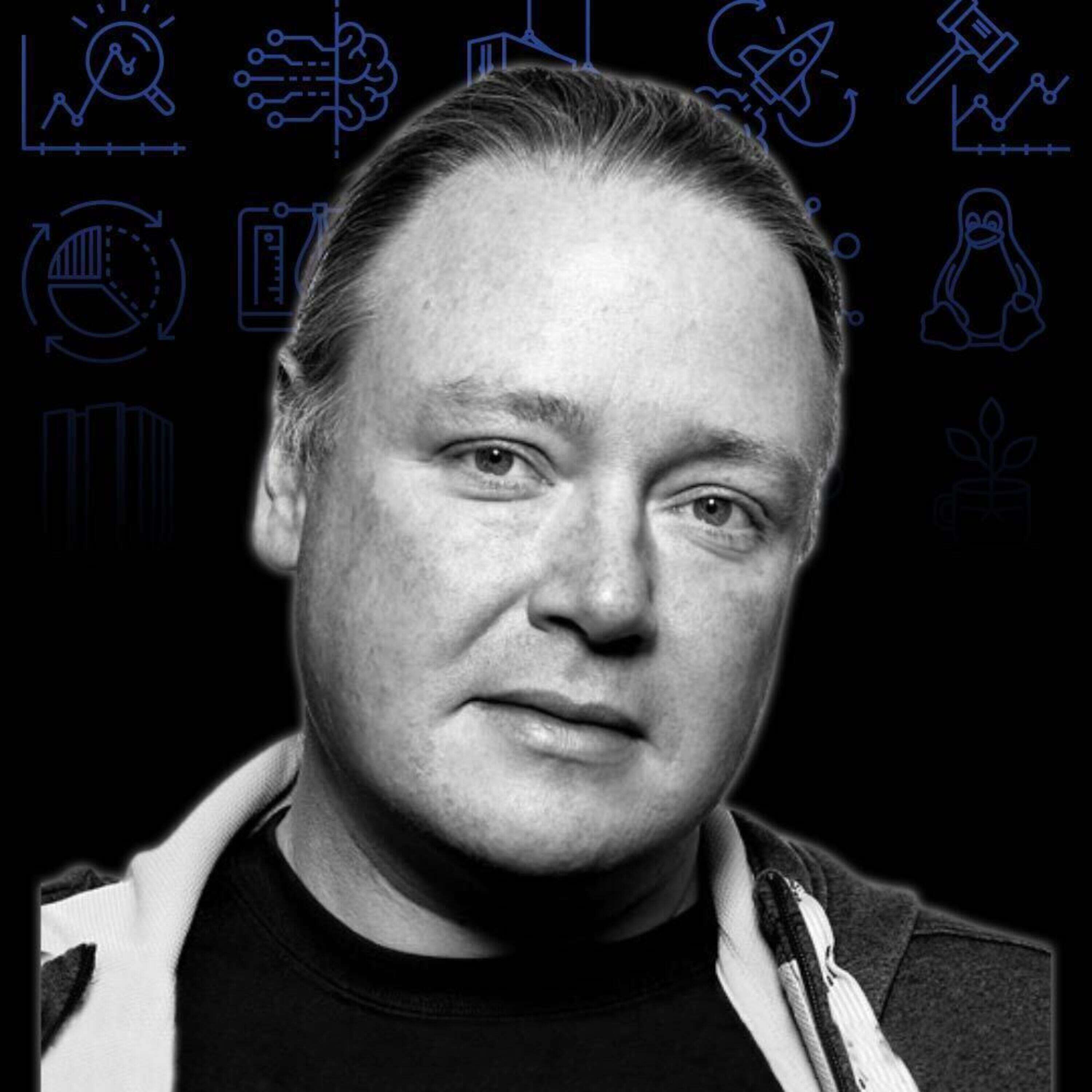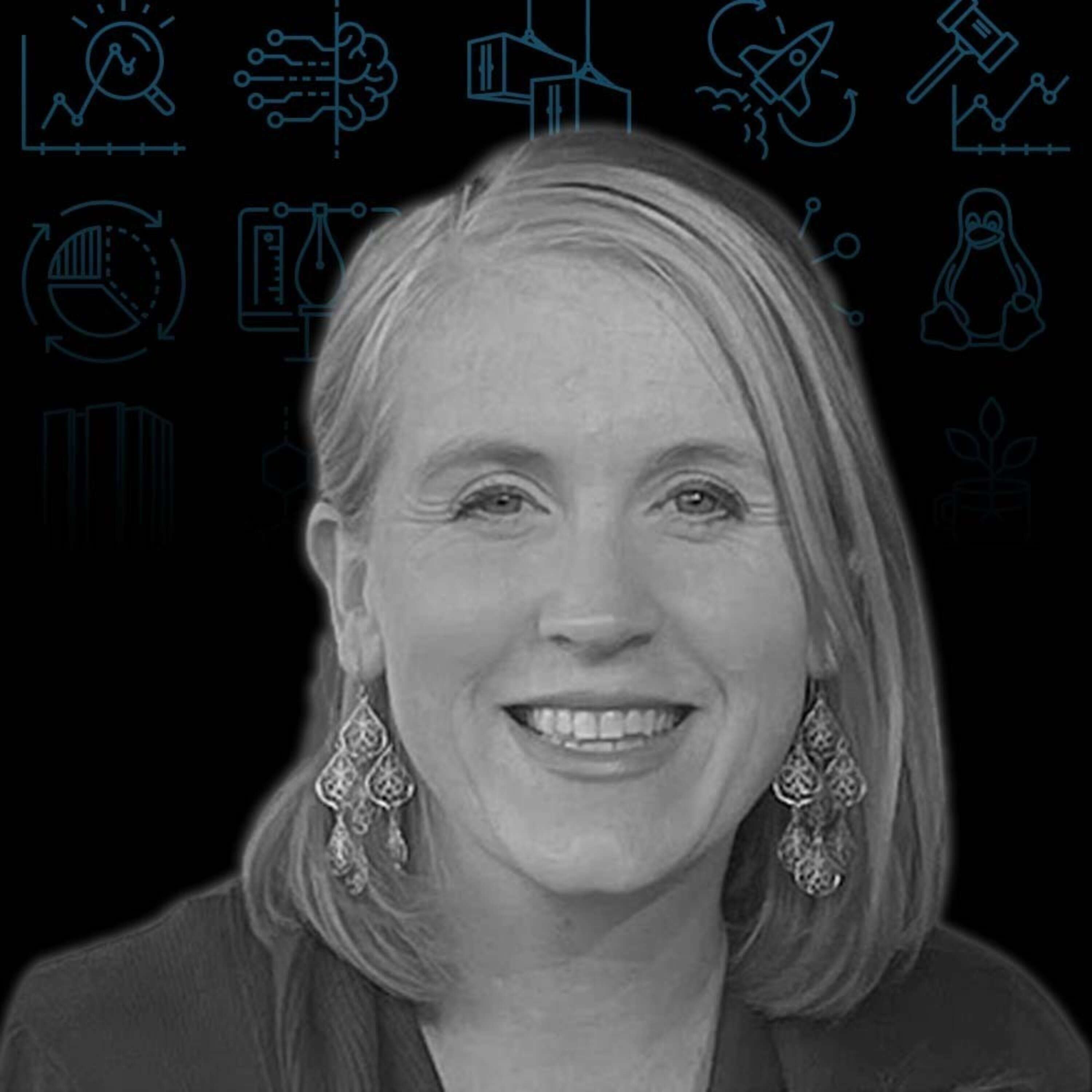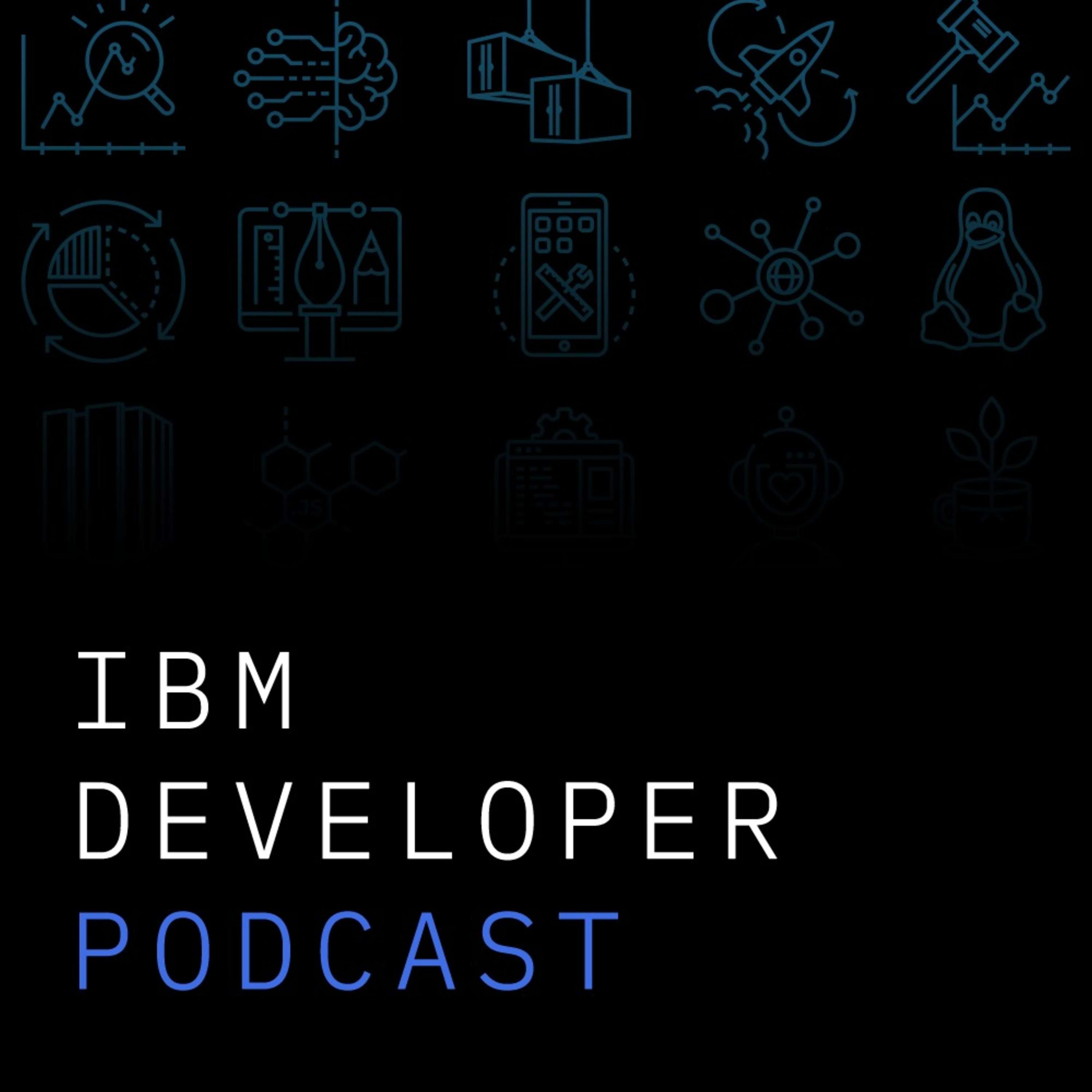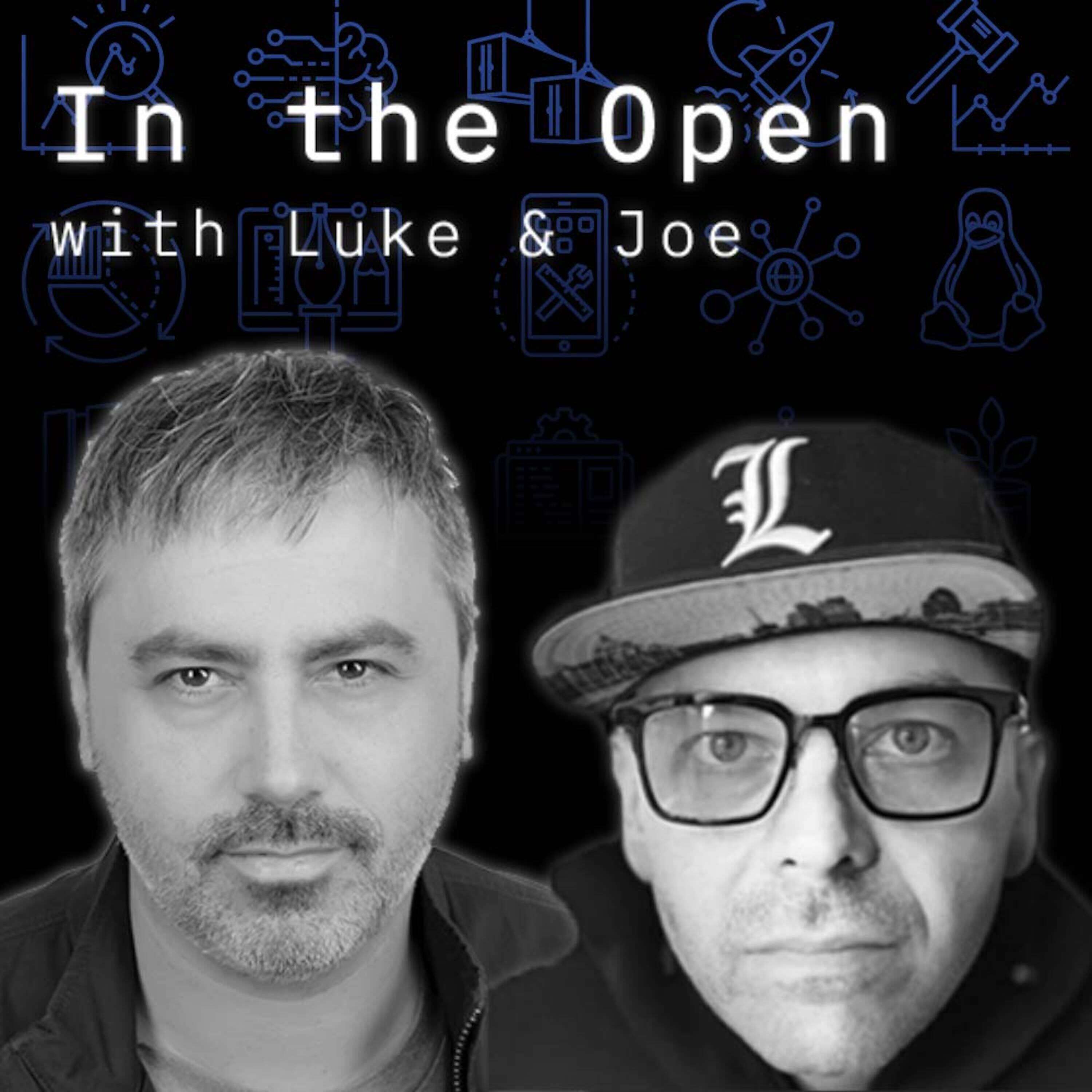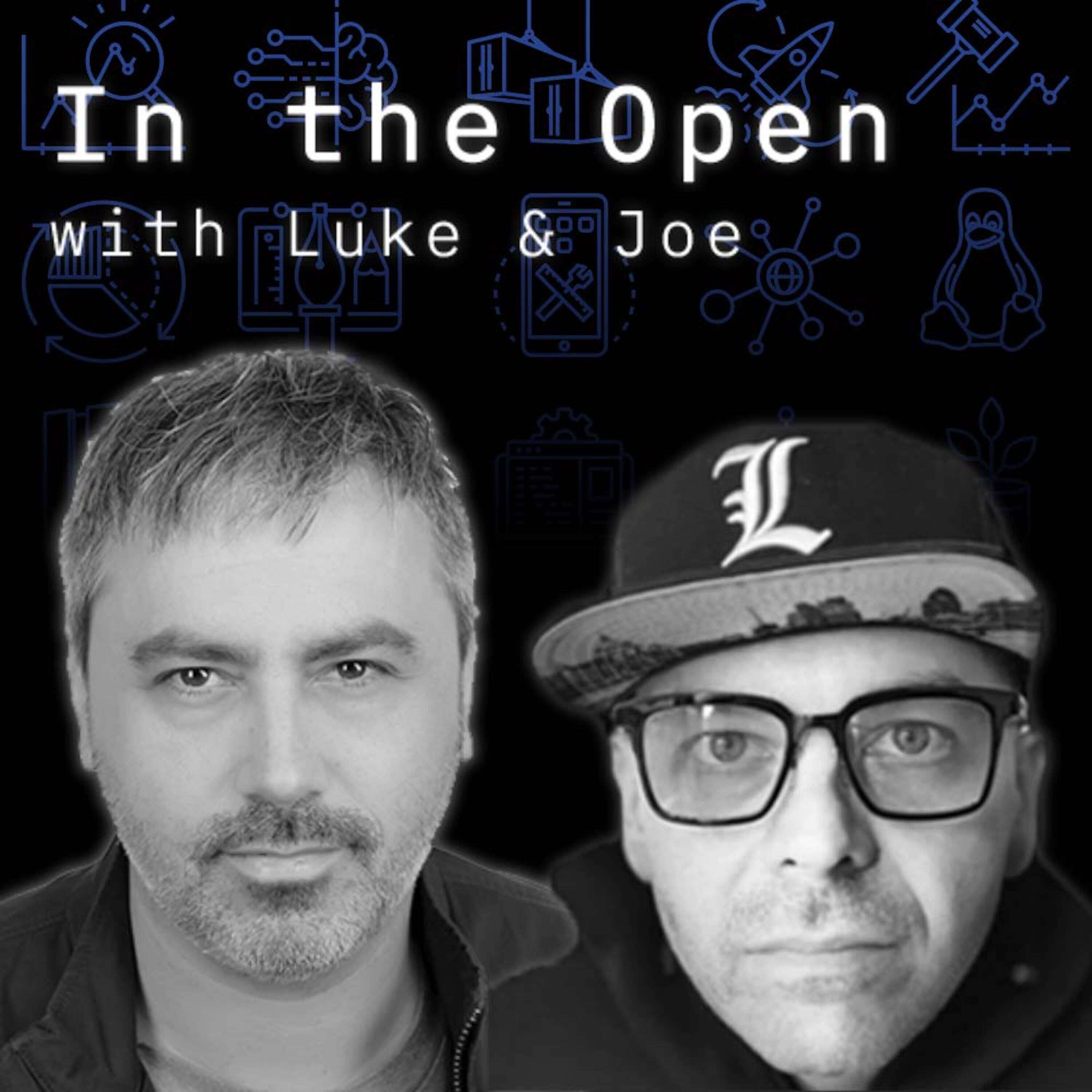Inventor of MQTT & IBM Distinguished Engineer | Andy Stanford-Clark
- 0.5
- 1
- 1.25
- 1.5
- 1.75
- 2
Andy: I'm Andy Stanford Clark. I'm the CTO for IBM UK in Ireland, which gives me responsibility across all of IBM's technologies, talking to CTOs of clients to explain to them the exciting futures of how you mix quantum with blockchain, with Z, with bit of augmented reality and how that comes together in a really exciting set of solutions that we build in the future. I've been doing that role for two years. Before that, the last 20 years were spent working in what we now call Internet of Things back in 1998. In fact, 1999 we published the first specification for the IOT messaging protocol, MQTT, which hopefully your listeners may have heard of. And I co- designed that with one of our business partners. And the following 20 years were spent evangelizing the Internet of Things, which back then was called things like Pervasive Computing and Ubiquitous Computing and Smarter Planet. We finally settled on Internet of Things, telling the world about Internet of Things and federally creating a marketplace for that billion, trillion dollar industry, whatever you want to put the numbers on that we now find ourselves in which is really exciting.
Speaker 2: It is really exciting. And I'm an IOT hardware hacking type, so I was super excited to talk about specifically MQTT Because it was what, maybe two weeks ago, it was the anniversary wasn't it?
Andy: Yeah. Couple of weeks ago was the 20th anniversary of MQTT being published, although I was working on it for a couple of years before that, before we actually published the first version of the specification. But if you look on the web, the actual published date is there for all to see.
Speaker 2: And if folks aren't familiar with what it is, it's a small format messaging protocol for embedded devices and sensors.
Andy: It's really extending the idea of enterprise messaging, which we know and we love so well with MQ series, which I used to work on ages ago, we wanted to extend that outside the walls of the enterprise to reach down to what we then called scatter devices. So devices in the field that are gathering data from things like oil and gas pipelines and electricity substations and so on. And send that data back into the enterprise to be part of the situational awareness and the business context of the enterprise. And so we needed a cut down version of effectively enterprise messaging. So I went right back to square one and said okay, we're on really low bandwidth, the lines are really expensive to send data over, maybe satellite comms links and stuff like that. We need to go right back to basics. So what's the bare minimum necessary to send a message reliably from A to B so that both people know that it's both sent and received and all that kind of stuff and know if one of the devices has disappeared off the network because the link went down. So how do we build all that in? So we just built it up bit by tiny feature at a time until we had just enough necessary and sufficient and that was MQTT version two at the time and that actually stood the test of time for 10 years. So even when Internet of Things and cloud and all these things came along, we didn't actually make any changes at all to the original speck for 10 years. Which I think is a real testament to the, if I may say so, the foresight that we had in anticipating the uses to which the protocol was going to be put, which was pretty amazing given we had no idea it was going to be used across many different industries from healthcare to agriculture away from the original intended application of oil and gas pipelines.
Speaker 2: It's also interesting story to highlight the relationship between enterprise tech and open source. Here's something that was made for client needs but then opened up and became this huge loom for many different players.
Andy: And that was amazing because that was back in 1999. That was a real shock to IBM's system lawyers in particular when I said, sorry this protocol's got to be in the public domain. Oh no but we've got to earn the IP and no, he weren't listening to me. This has got to be in the public domain cause that's really what sets it apart from all the existing proprietary SCADA protocols. So we succeed in open sourcing it, putting the public domain right back then. But even then only IBM had implemented the broker end of things, the server. So although the client was free and you could download it and you could implement it yourself, nobody apart from IBM had implemented the server side of it. They could have done but they chose not to. So it was still seen as IBM proprietary and we thought maybe we were tricking people into you have to buy our stuff even though we're saying it's open source. But that all changed 10 years ago in 2009 where I spoke at the first Odd Camp on conference in Liverpool and I was given a talk about all the cool IOT stuff I was doing, automating my home, and having electronic mouse traps and tracking the island of white ferries and all these cool projects. And somebody asked a question from the audience, was this proprietary stuff or was it open source? Slightly cheekily because it was an open source conference so I think he was trying to nail me with the IBM stuff rather. So I said no, it is all public domain but between you and me, if somebody wanted to do an open source implementation of the broker, that would be really cool. I've still got the MP3 sound clip, which I played at Odd Camp this year in commemoration of the 10 years since that happened. And there's a guy called Roger Light in the audience and he was so inspired by this stuff. He rushed home, registered the project mosquito with two Ts, so MQTT in the name and the open source MQTT broker was born that night, certainly conceived that night. And I think that really that was the tipping point because sudden the world knew that MQTT really was open, not just some slight of hand by IBM. And that was the turning point in terms of the meteoric escalation of its use and the standardization through Oasis and ISO adoption by Facebook Messenger, people embedding it into solutions and hardware and that we've seen ever since.
Speaker 2: It's fascinating too that it's such thin threads that tie this together. Literally one talk at one conference and one person inspired.
Andy: Absolutely. Because you can never have planned for that. You said if I go and give present... You plan which presentations you're going to give at which conference is and which of the high impact one. But it was a very, an un- conference, it was linuxy, geeky tech stuff. I just went because some of my friends who did another podcast were presenting at it. So I just tagged along and it all just flew from there. So yeah, amazing serendipity.
Speaker 2: You mentioned in passing the isle of Wight Ferry and when I had met Chris Bailey at Oracle Code one, this is the first thing he said to me, he said, you have to ask Andy Stanford Clarke about the Isle Of Wight Ferry. So can you tell us the story of the ferry and how you did it and then also the lovely display you have downstairs?
Andy: Sure, yeah. Okay. I live on the aisle of Wight, have done for 21 years. And so I traveled to work most days by ferry from cows on the northern tip of the other Wight to South Hampton on a boat called the Red Jet. And a long time ago, 10 years ago there was no way of knowing if the ferrys were running or not or if it's a foggy morning or a stormy day or something, the ferrys might not be running. There's no way of finding that out. So I figured that maybe using IOT data we might be able to back the ferries so I could see before I left home if I was going to be able to catch the ferry or not. So it turns out that all the boats have this thing called AIS, automatic identification system, which is fortunate because I didn't imagine the ferry company was going to let me put sensors on their boat because they're a bit precious about them. So this AIS data is publicly available. It's been transmitted by all the boats and then received by a network of receivers of people who put it all into a central database and you can log in and collect the rectangle you're interested in of the world. I was picking the soland area around the Olive Wight and you can see all the boats that are in there. So I'm sitting in my car at the other ferry port, slightly annoyed there's no ferries that morning. I've got my laptop on my lap with a, I guess back then it was a 2G mod connected to the internet. So I wrote a little pearl script to connect to this public database, collect the database, collect the data for the solvent region and then strip out all the fairies by name. So all the different ones like rigid three, rigid four, and the latitude and longitudes. I knew where each one was and that and the direction, speed. Then I use geofencing to put a little circle around each of the ferry ports to find out when the boat's going in or out of that circle. And then I sent a message to Twitter. So each ferry route has its own Twitter stream. So twitter.com/ redjets for example is the red jet stream. And you can see the leaving times and arriving times of each ferry as it goes at between West Cowes and Southampton. And that was great. That basically solved the real world problem for me, which is what most of my inventions are and solutions to problems that I see out there or that I face. And loads of people were using it to track the ferrys and plan their journeys and so on. So that was great. And because it was on Twitter, many people could receive the data that I was seeing as well. So I wasn't keeping it to myself. So it opened up that data feed and the ferry companies themselves weren't involved in any way with that except one day and it was April the first I remember it well. I was looking at the timetable for the ferry departures on the ferry website and I noticed it said live ferry times, live ferry departures and it said red jet 3 arriving West Cowes and so on and thought that's interesting. That's the same data as I've got, I wonder where it's coming from. I click through the link and it went to my Twitter page. That's interesting I thought. So what they were doing turns out was pulling an RSS feed off Twitter emerging it live into their website, which is pretty cool. But they hadn't asked me or told me or anything. So I was a little bit annoyed. So because it was April the first and because I thought I'd play a little trick on them. So I logged into the Twitter feed and typed Red Jet four's arrived in Milton Keens, which for people who don't live in the UK is nowhere near the sea, it's in the middle of the country. You can't get there by boat. So for the next hour, that became the official status of Red Jet four on the Red Funnel website, which I thought was hilarious. We got on local radio and blogged about it and got it all over Twitter and it's great. So late to that afternoon I felt guilty about it. So I phoned Red Funnel and said have you seen where Red Jet four is? And I said, yes, we've just noticed. I think we should meet. I think we should. So we met the next morning and I thought I'd be in trouble for mutilating that website. But actually they were very pleased. They said look, we've been trying to get into social media since the beginning of the year, it's April. We haven't got a clue what we're doing as evidenced by the fact we didn't know how to contact you to ask you if we could use your Twitter feed. Well, you could have tweeted me. Yeah, we know that now but we didn't know that. So easiest sale in IBM's history, they bought the solution which is now running in their Southampton Data Center and they're great friends of ours and it's really been a tipping point for them because they now use Twitter themselves as social media platform to interact with their customers, the commuters. So you can tweet them and ask questions about when the last ferry is or what the ferry costs are. Something the IOT hack has really opened up for them a new channel of communication with their customers, which is a real competitive advantage for them and made us all receive a much better service from them. So that's been a great win.
Speaker 2: That is such a fascinating story. It's so interesting and I love it from as a developer story too because you're just looking to solve this problem for yourself to make your life easier and you are the proxy for not only the company but all of their users.
Andy: And that's why exactly why we do design thinking now because you put yourself into the shoes of the end user of your solution and then you work back towards the thing you're getting designed. So that whole sort of outside in design is epitomized and embodied there.
Speaker 2: And before I forget, there's a lovely piece down in the Hersley house that shows all this data in real time and it's quite beautiful as well.
Andy: Thank you. Yes. So this is a piece of artwork called fairy lights, which is actually a pun because if you look in the island of Wight and speak is of Wight keys fairy instead of fairy. So it's like fairy lights, which is a bit like dancing, Christmas tree lights and so on. So what happened was that three years ago I was very lucky to be named one of the elder Wight's hidden heroes. They named seven hidden heroes for people who've done something quite impressive in the world, but most people in the elder Wight probably wouldn't know about. So it's kind of to inspire particularly a younger generation of STEM students to adopt technology and engineering. And so I was recognized for the work, my contribution to the internet of things with MQTT. And as part of it there was an exhibition in one of our local art galleries and there's some funding available to make an art exhibit representing, characterizing each of our work. And I didn't have a clue, I didn't think of a piece of artwork. So I thought well it has something to do with ferries, something to do with LEDs, something that's interactive, something to do with Internet of things. So I teamed up with a local artist called Debbie Davis who was an interactive artist and we dreamed up this thing which essentially is a piece of laser cutter acrylic, the outsized model of the is of Wight. It's cause the is of Wight's so important to those of us who live there. And the mainland, outline, shoreline and then there's rows of LEDs going across for each of the ferry routes, each of the five ferry routes. Essentially what we do is we pick up live AIS data and we put little dots onto the LEDs showing the current position of the boats in real time. So there's piece of artwork which has no wires, it's just hanging on the wall so it's like magical and it's done as a half mirror so it's done as an infinity mirror. So it looks like there's an infinite regress of lights going back like a tunnel of lights, which looks really impressive, particularly a darkened room. And then it's also got the live ferries going backwards and forwards. And then around the outside he's got this thing called cheer lights, which is another Twitter phenomenon invented by a guy called Han Charla a few years ago at Christmas to spread a bit of cheer through lights. The idea is that you tweet @ cheerlights, red, say some color, and then all the cheer lights devices in the world all change color simultaneously to red. So you can give a little pleasure by going, oh I've just changed all those thousands of lights to red. And indeed there are lots of people around the world have implemented cheer lights and so this fairy lights includes a cheer lights display so you can stand in front of it and tweet cheer lights yellow and all the lights go yellow inside it. It's pretty cool.
Speaker 2: Interesting. And I hadn't gotten that part of the story. I had only gotten the fairy portion, so I feel like it might be nice to give our listeners a little context about where we are at Hersley, what is Hersley and how it fits into the IBM strategy of innovation.
Andy: Sure. So Hersley is one of our development labs. So IBM deliberately separates the R from the D. So we don't have R and D facilities like some companies do. We separate the R, which is the research labs like Yorktown and Zurich and Almaden. They do this sort of the 5 to 10 year blue sky research and the development labs, which are again, there are a number dotted around the world of which Hersley is the largest, second largest outside the U. S., second to Bangalore. And we do this of the north to five year. I tend to think of as applied research. So it's going from where we are now to the extension of our existing products and the next generation of our products and where they'll go next. Bring in a lot of innovation, a lot of scope for patenting ideas. I've got 43 patents from my work here at Hersley over the years and we serve a worldwide marketplace. So although we're based in the UK, we support MQ and inaudible and Java and whole bunch of products which sold worldwide. And we have responsibility for the support of things like the Watson IOT platform. We also do the DevOps as well. So we actually run the platform from here in Hersley, the worldwide IOT platform instances. And so I've been here in Hersley since my first day at IBM, which was 28 years ago now. And I've been in development organization for most of that time working my way up through the developer ranks. I finally becoming a distinguished engineer for Internet of Things, which I was seven or eight years ago and had a worldwide responsibility in the Internet of Things division as supporting our customers as they ramp up from the early prototype, this small proof of concept with a 10 raspberry pies up to the huge deployment of tens of thousands, maybe millions of cars or escalators or washing machines rolling off production lines and being fitted with the smarts to give them telemetry feedback from the field to do things like predictive maintenance and allow them to become smart devices. So that was a very satisfying role but had clocked up lots of air miles. I spent a lot of time at the Munich IOT Center, but my base has always been here in Hersley and I very much feel at home in Hersley and my office has been here ever since. And even though I now have a UK and Ireland role and I'm traveling around a lot visiting clients, I always like to come back to Hersley usually once a week to say hi to everybody and just find out what cool stuff's going on in the demo labs and down in the immersion technology and see what the living lab technologies are up to now and maybe contribute some of my thoughts and prototypes to as demonstrations in those labs as well to really help push along the technology demonstrations. Also to inspire people with the new generation of upcoming people. Just try out cool ideas because I think maybe lost a little bit the feeling it's okay to innovate and people should take a bit of time out to try out an idea because that's really where the new ideas which can turn out to be new billion dollar products come from, little bit of Friday afternoon skunkworks project going on.
Speaker 2: I had visited earlier this week and had gotten a tour. I've been through the emerging tech lab, I've seen your maker space, your media space, the client center. And I must say the thing that really did strike me about the campus in general is you can feel there really is a buzz and a culture of innovation here. People are excited. But for example, I had also interviewed Ed Moffitt from the design team with several of the designers and that was actually a really interesting window to understand how the designers are working with the product teams but also collaborating together and tied again into very tight feedback loops with the clients. So there really is a culture of innovation and an excitement around this campus.
Andy: And we've tried very hard with Steven Morrick, the current lab director. He's made a real effort to nurture that buzz as you mentioned. We've got lovely grounds here, it's great to go for a walk at lunchtime and that's not just to have some exercise, that's when ideas start to ferment and they turn into brilliant inventions in the afternoon and you can't just buy or just switch on that kind of environment. It's something we've nurtured over decades here in Hersley and those of us who've been here for a while and recognize that have worked really quite hard to nurture that spirit of innovation set up the maker space. And as I said, it's okay to innovate.
Speaker 2: And I'm imagining people are recognizing now we're in this hybrid multi- cloud world. So could you maybe give us some insight or your thoughts on this hybrid multi- cloud world we're in and sort of how IBM is approaching this?
Andy: Well yeah, so we just have the Think Summit in London about three weeks ago and it was really interesting there to challenge CTOs of clients on just how many clouds they're actually using. And they say, oh over we've started to go with Amazon. Okay, end of story. No, you're using Salesforce, you're using Concur, you've got using SAP, you're using Oracle's cloud. Okay that's five, oh and you're doing some hosting on Amazon and you're doing your Office 365 on Microsoft and you're running some analytics on Watson on IBM's cloud. Okay now we're up to 10 and before you know it you go, oh yeah, actually. So without realizing it, people are inadvertently adopting a multi- cloud strategy. They just don't really recognize it as such. They just think we've got one kind of cloud provider for our hosting cloud hosting and that's it. But that really isn't. So the trick then becomes recognizing that what you're actually doing is you are taking your workload and spreading it quite thinly across the different elements of the cloud. And it's really not so much that it's multi- cloud, it's just the Cloud T, capital T, capital C. If people think about it as being that and recognizing that if you look same as you look up in the skies and just full of one cloud, it's full of lots of different clouds. You can think, well some of it's over there and some of it's over there, some of it's over there. And by the way, our core systems of records are running on a Z15 in our data center and that's not going to change anytime soon. So we need to bridge that into the cloud for the web UI and the online app. Okay, that's no problem. That's the enterprise integration part that IBM's always been so good at. So suddenly you go, what's up then? Oh then we give, that is hybrid multi- cloud. The trick is to manage that as if it's one homogeneous infrastructure. And so IBM allows you to do exactly that by spreading your stuff around. And what we might start to see is that people actually start moving workloads for things like carbon intensity. So if for example, Iceland's got some spare capacity, they're all on geothermal power, so it's very low carbon to run stuff in their data centers. You might have a little broker agent that's sitting there looking for opportunities to run certain jobs and low carbon environments. So you might actually be able to net off carbon credits for low carbon use of data centers. This stuff hasn't happened yet. We're on the edge of that kind of arbitrage being done. Brokerage of jobs being run in the cloud, recognizing the cloud is lumpy because some of it's high cost and some of it's low cost and some of it's high performance and some of it's got GPUs and some of it's got mainframes. And so you always move the right stuff to the right place. And the other thing that some people are doing now is actually moving compute to where the data is. So rather than the other way around, it's more of a data flow architecture rather than a von norman architecture. So you're actually saying I've got this massive data sitting over here, I'm going to send my functions so we can't locate it with the data and actually run them locally rather than having to draw vast amounts of data back across the internet. So we're starting to seeing some quite sophisticated algorithms for rooting of both compute and data flows moving around the internet. Really exciting stuff, actually roughly what my PhD was about 30 years ago.
Speaker 2: And that same paradigm, this is when you hear so much now about edge and I think it's confusing to people because one person's cold storage could be next to another person's edge. It all depends on the context of your needs and your workloads.
Andy: Yeah, so really good example is the Mayflower 400 project that we're working on with a company in Plymouth that makes autonomous vessels, boats and Plymouth University here in the UK. And the plan is to commemorate the 400th anniversary of the original Mayflower sailing. We're going to sail an autonomous boat from Plymouth UK to Plymouth, Massachusetts. It's going to take about two weeks. The boat is a 15 meter trimaran and it's going to be packed full of scientific experiments because you have no people on board. It's going to be completely autonomous and IBM's AI is going to be driving the boat. So it's going to be navigating, it's going to be looking at weather forecast from the weather company, it's going to be bringing in factors like have we got enough solar input to charge the batteries to make to run at this speed or do we have to go slower or do we have to reroute to avoid the storm that's coming up? What are the overall mission objectives? Have we collected enough data from this area yet? Do we need to go backwards and forwards a few times to collect more inaudible data? So the whole thing is going to be driven by a combination of IBM's power vision processing and also piece of enterprise software called ODM, operational decision manager, which has actually been around for ages in enterprise but actually does a rule- based decision- making system. So we've done things like the collision regulations, which are the rules of the road for boats to use. We've encoded those into ODM so that now the boat can make, when it sees a boat in front of it going from left let's say, it can make an intelligent decision as to where, which side of it to pass, ram in front of it or steer behind it or if it's an iceberg, what should it do, if it's an animal, what should it do? We've put in the profiles of all these different obstacles it might see and we're teaching it at the moment at down in Plymouth Sound to recognize these different visual objects and then to take the appropriate evasive action. Now all that processing, because we're going to be offline for most of the journey has to be done at the edge. So this is perfect example of where you do your AI training in the cloud and on big power AI systems with loads of GPUs and you do the real heavy compute there. But when you come up with the final model, you download that into the boat onto an edge processing system and then link the cameras into that, link, the ODM into that. So all the decisions made by a distributed cluster of edge devices on the boat. And it's only if it really gets into trouble, it can give us a call and satellite phone and say I've come to the end of my decision tree, I don't know what to do, help. And then we can guide it. But the plan is to make it fully autonomous and it'll sail from Plymouth to Plymouth and we'll be looking forward to welcoming it as it comes into the harbor over there.
Speaker 2: That's fascinating. And just to give our listeners some context of what would be the business applications.
Andy: Yeah, so the two main areas where edge has its kind of main applications. One is where the connectivity isn't so good either because of latency or bandwidth. So your drone example would probably a bandwidth one or that you've got to make a decision sufficiently quickly that you haven't got time to roundtrip it to the cloud and back maybe in a factory automation system where you've got a lathe which you're monitoring and you've got to decide where to move the lathe head left or right. And the other area is where the bandwidth requirement is so high. So if you've got sensors which are producing say video or acoustic data or very fine resolution data from a transformer energy system where you can get just going to get so much data, you can't realistically ship it up to the cloud and process it. Because normally what happens you throw 99% of it away because you're looking for features, you're looking for events in that data. If you can have the edge computing system sufficiently powerful that it itself can look for the features and the events in that raw data, you can safely throw away the rest of it and just send out the events, which might be one byte for every gigabyte of raw data as it's moving up the data information knowledge, insight triangle, DIKI triangle. So we are actually moving up to higher value being added to the data and the big wide base of that triangle is raw data that you can largely throw away.
Speaker 2: So something I like to ask everyone on the podcast is about their tech origin story. So for me, my family manufactured entertainment lighting and I got a Commodore 64 and I was just hooked. What's your tech origin story? What kicked it off in the beginning for you?
Andy: My dad was keen on electronics and back then when I was a child, electronics meant transistors and resistors and capacitors. TTL chips near logic chips were just coming in the mid'70s, so for hobbyist use. So I started making little games with end gates and all gates and stuff. And that kind of got me into the idea of logical electronics, which fitted very well with the way I thought about the world. And then kind the first home computer kit started coming out and I was thinking computers, I think I remember when I was four actually asked for a computer from Christmas. My parents told me I was so disappointed not to get a computer. Needless to say they weren't really available for purchase back then. There'd been a whole room size thing. But I did get the ladybird book of computers, which basically that sealed my fate and I saw all the different applications that computers were already being put to things like agricultural control, industrial applications, health applications, monitoring patients in hospital beds, data processing of different sorts, running aircraft navigation, all those different uses that computers can be put for that idea of a single machine having so many different uses and all the idea that a set of logic instructions that you encode here can have some influence on the real world. So writing some software here might make a motor work or make an LED come on. So really that was internet of things way back then. So what's happened now is common run full circle. So having trained as a software engineer and still have this kind of hankering after, so electronics has always been my hobby but never my profession. But now with the internet of things, it's back to being both again. So I get to play with the technologies I love and get paid for it, which is cool. Although now my CTO role have had to leave the IOT stuff during the day to other people and IOTs my evening and weekend hobby now, but I still do quite a bit of it.
Speaker 2: So I know that you are traveling around a lot now in your role as CTO and you're meeting a lot of probably other CTOs and C- suite folks. So what are you talking about with them? What are they asking? Give our listeners some insight into what's going on?
Andy: Yeah. We've done a lot of studies recently to try and find out what's on the minds of CTOs, what's keeping them awake at night. And it's interesting to see that even without prompting cloud and AI come out of the top two and cybersecurity the third one. So there's that kind of magic triangle if you like, of cybersecurity cloud and AI and on the grounds that you need cloud to process all the data for AI, but you need to secure it wrap very nicely together. But the CTOs I meet are to a greater or lesser extent like me, they're a bit geeky and they like text of, even though it doesn't directly relate to they what they're feeding into their own businesses. So when we start talking about virtual reality or genuine applications of blockchain, which are actually awesome, or quantum computing, which is my favorite other topics on one of IBM's quantum ambassadors. And they really get excited about the future and start to think about how those building blocks that we have today fuse together to make really sophisticated solutions in the future. So rather than having to write everything from scratch, we're really building on the shoulders of giants to have libraries and microservices and APIs that we can call technology chunks. And we see this in IOT as well. Things like you'd rather have to build your own computer, you can buy a raspberry pie or an Arduino, you don't have to build sensors with resistance and capacitors anymore. You buy a little sensor board from ADA Fruit or Pioneer or somebody and just literally plug it in. So the barrier for entry has become so much lower because now you can almost think, what problem do I want to solve? And then they're on the shelf and with a bit of Googling around, you'll be able to find very quickly the components you need to build something. And that's really what we're seeing in the enterprise space as well. People building, particularly with cloud, where writing an application rather than being tens of thousands of lines of monolithic code like it was when I was allowed, is now really a choreography of calls to APIs. So you set up your data, you call an API, you take the results process out a bit, call another API. So it's really a descent through a set of API calls, which is a totally different way of writing applications, but much more in terms of rapid time to value or rapid time to wow even that you can get something working very much more quickly. And technology like Node Red, which actually came from here in Hersley, allows you to very quickly string together in a low code sort of way applications. It's a very sophisticated. I think that really characterizes this new approach to writing applications that we're seeing in the cloud, which makes life so much more modular, that really agile approach, that very natural way of expressing a problem and iteratively creating a solution rather than having to go away, do a waterfall solution and then come out with a, here's my solution 18 months later, oh yes, that's what you were working on 18 months ago. Whereas you can be doing stuff incrementally and showing it to people as you go along.
Speaker 2: It is really fascinating how we've seen in the hardware, the same thing we've seen in the software is modularization and it allows a much faster way to get to a solution.
Andy: Yeah, absolutely. The fourth thing on CTO's list actually was open source and the way that it's revolutionized in the way I've just described in terms of building blocks that they haven't got to go away and write themselves. But that just changed your whole relationship with the idea of, some clients mentioned one throat to choke, which I think is a horrible thing to say, but they say, they want to know who to phone if their system goes down. And if there's a lot of satisfaction saying we phone IBM if it doesn't work. And that's satisfying for them. But in fact it turns out that if you actually contribute to the open source projects that you consume, then you are known to the developer community. So if you have a problem, you raise an issue on GitHub in the middle of, and it's sitting there for three weeks going, oh yes, maybe we'll get around to that. Oh, it's raising a bug, quick, let's have a look at it. And you might get an answer within minutes. Somebody's somewhere in the world will be looking at it. And the open source projects that have been most successful have been ones where the main participants in the project, in terms of contributing to it, have been the main consumers of it in their businesses as well. And that's a good example is ING bank using a project called inaudible, which is open data lake and data governance project, which actually people in this corridor are working on, which the bank is using it as their core infrastructure for that data lake. And they're also the core developers on the in source projects. The whole gift to get thing here, you give and you take.
Speaker 2: It's funny, I actually had the opportunity to interview Mandy Chessell at Open Source Summit about this exact project. And right away when I heard about it, I could see how it fit in with these other pieces. Especially if you have a lot of metadata.
Andy: Exactly. See, it's all come run full circle.
Speaker 2: Well, I feel so fortunate too, especially in this role as podcasting, they always say there's like the hallway track at the conference. I feel like I have my own podcast track where I'm getting to interview all these experts and really learn the technology. If our listeners wanted to keep up with say, your IOT projects, where can they find you on social media? Do you have a blog? What are some good ways to keep up with Andy Stanford Clark?
Andy: The best way to follow me on Twitter @ andysc, that's where all my stuff goes. I blog occasionally, stanfordclark. com with a hyphen. It's where I tend to put the articles. I sometimes guest blog on things like RS Component Design Spark, but yeah, I sometimes write guest blogs, but usually Twitter is the best way to find out what I'm up to.
Speaker 2: Well, thank you very much for being on the podcast.
Andy: It's been a huge pleasure, Luke. Nice to meet you. Thank you.
DESCRIPTION
Please join us for a conversation with Andy Stanford-Clark. Andy is an IBM Distinguished Engineer and Master Inventor with more than 40 patents. He is based at IBM's Hursley Park laboratories in the UK, and has a long background in the Internet of Things technologies. Notably, he was the inventor of the lightweight publish-subscribe network protocol MQTT.
Today's Guests
